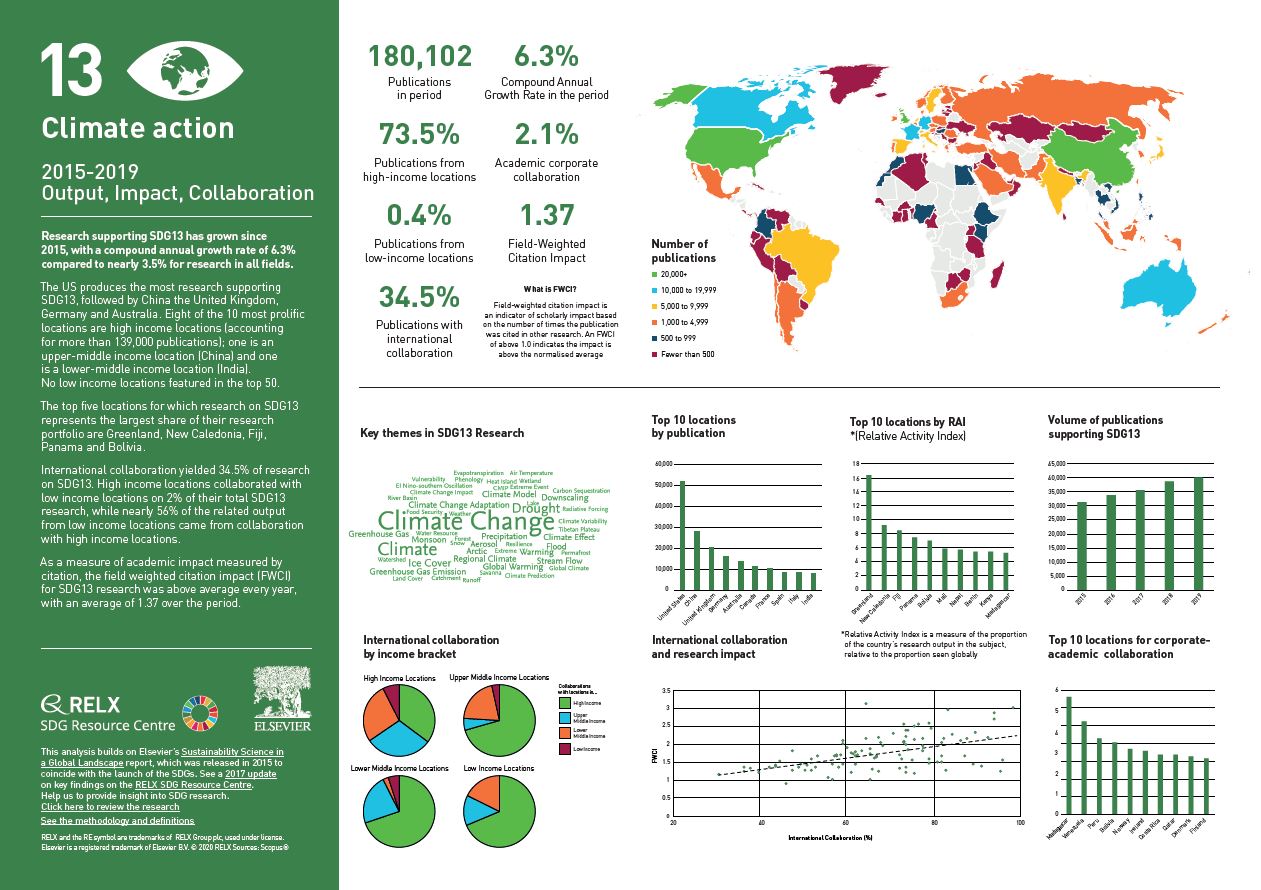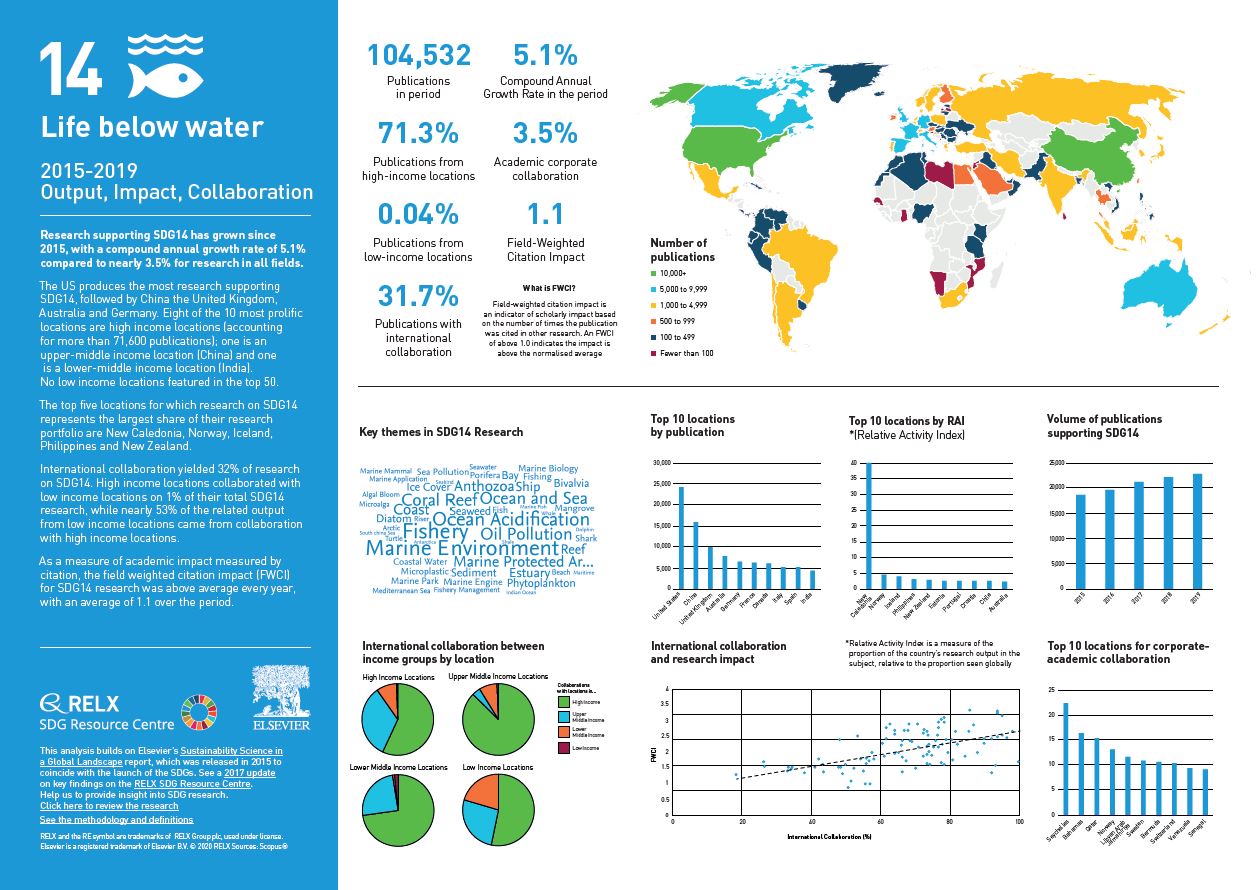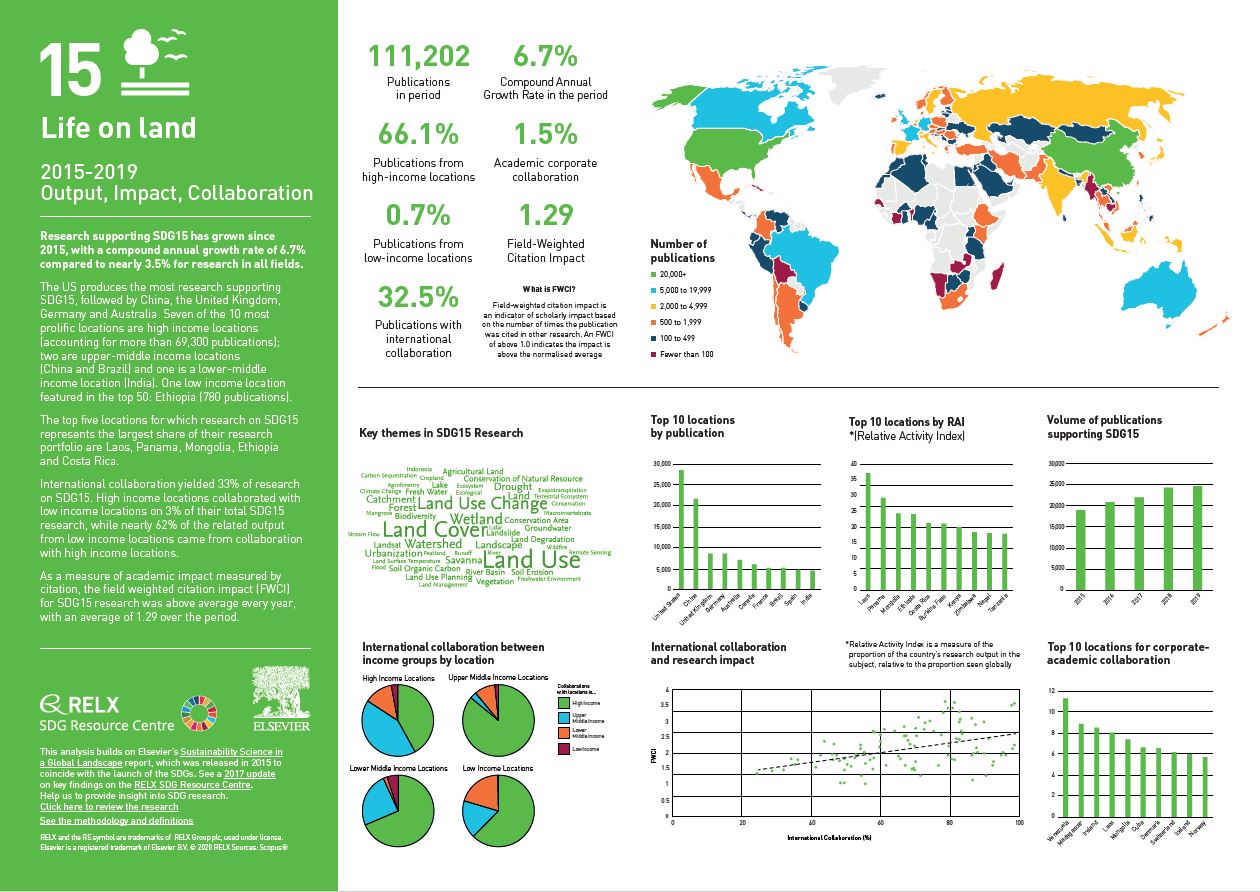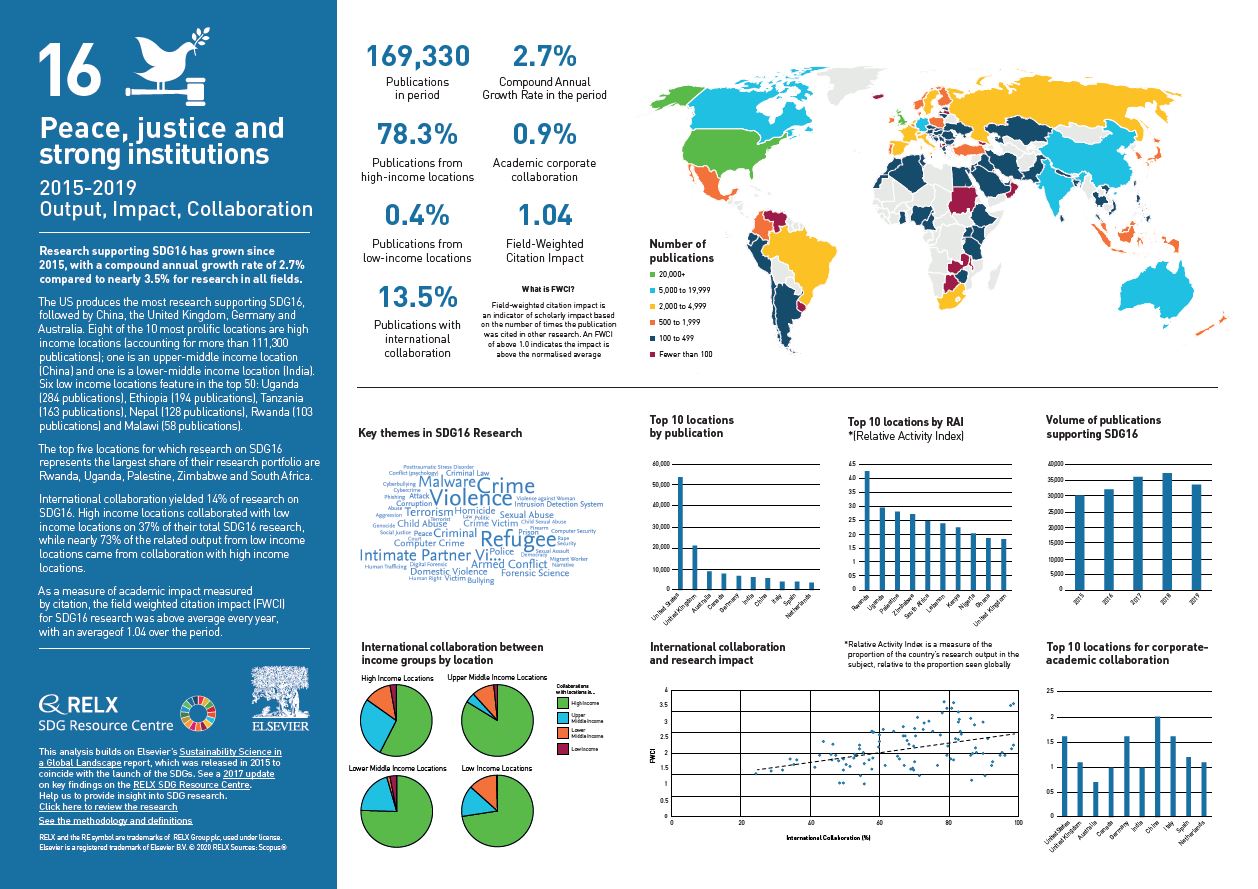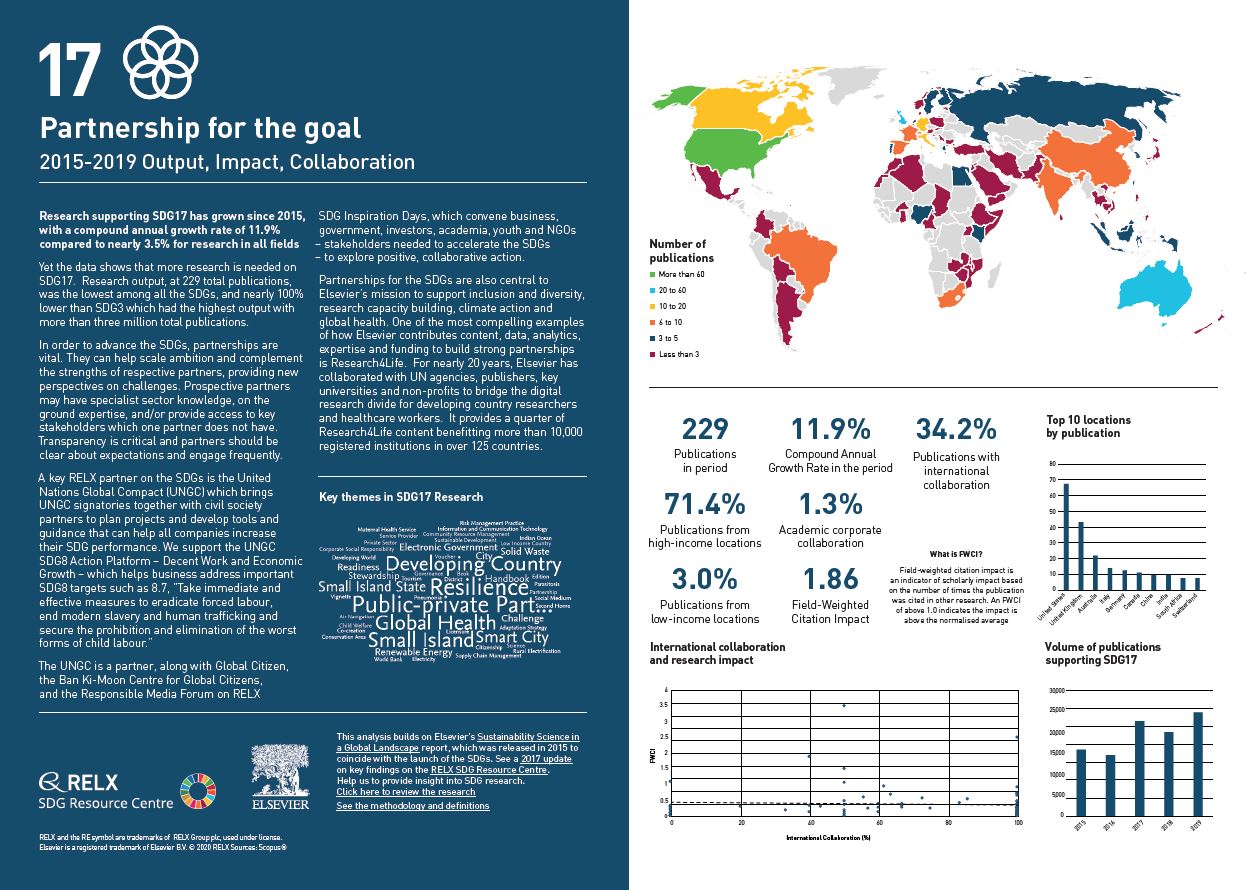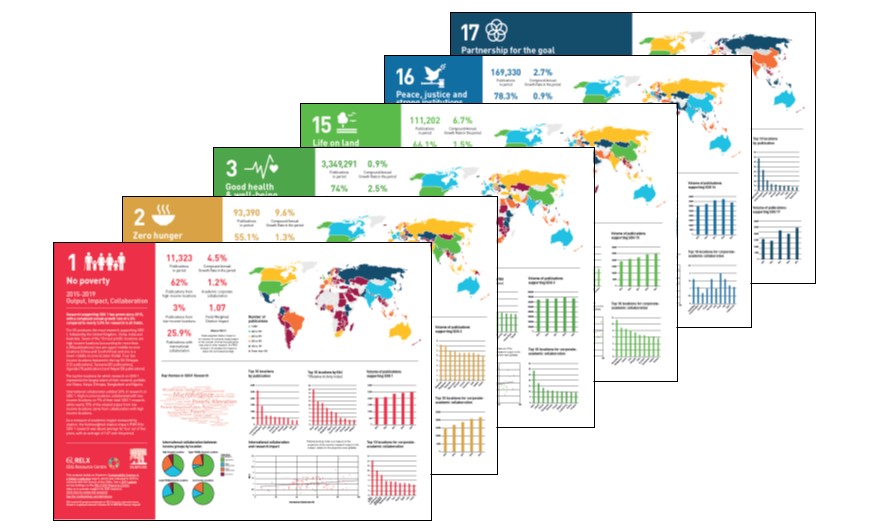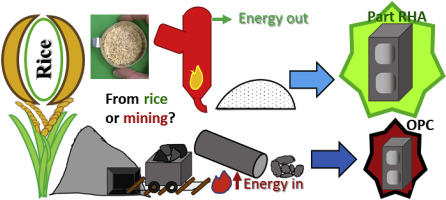Over the past five years, we have used data and analytics to help the research and healthcare communities navigate the sea of research and to put collaboration, both interdisciplinary and international, at the heart of scientific progress on the SDGs. View findings for SDG 13.
Over the past five years, we have used data and analytics to help the research and healthcare communities navigate the sea of research and to put collaboration, both interdisciplinary and international, at the heart of scientific progress on the SDGs. View findings for SDG 14.
Over the past five years, we have used data and analytics to help the research and healthcare communities navigate the sea of research and to put collaboration, both interdisciplinary and international, at the heart of scientific progress on the SDGs. View findings for SDG 15.
Over the past five years, we have used data and analytics to help the research and healthcare communities navigate the sea of research and to put collaboration, both interdisciplinary and international, at the heart of scientific progress on the SDGs. View findings for SDG 16.
Over the past five years, we have used data and analytics to help the research and healthcare communities navigate the sea of research and to put collaboration, both interdisciplinary and international, at the heart of scientific progress on the SDGs. View findings for SDG 17.
This ties into SDG 5 on gender equality by establishing a need for general recommendations and guidelines toward precision and sex/gender medicine, with regard to dosage, tolerability, interactions and side effects, sensitivity of diagnostic tests, and distinct treatment strategies.
This chapter advances SDG 3 by providing an overview of novel probiotic-related concepts and the scientific evidence that supports their bioactivities as well as the possible mechanisms underlying their health-promoting effects.
This book chapter advances SDG 3 by explaining how gastroparesis is a disorder with slowed or inhibited movement of stomach contents into the small intestine. It has long been recognized that the female gender is more prone to gastroparesis, though the significance of this remains a mystery and has not been completely elucidated.
Over the past five years, we have used data and analytics to help the research and healthcare communities navigate the sea of research and to put collaboration, both interdisciplinary and international, at the heart of scientific progress on the SDGs.
For the first time, we have published graphics covering all SDGs using data and insights from Scopus and SciVal. These graphics show key metrics for research output, collaboration and impact.
After water, concrete is the second most used material in the world. Using life cycle assessments, concrete has typically been found to be 80% of a residential building by weight. Cement production consumes large amounts of energy, motivating a search for sustainable alternatives. Rice husk ash produced in controlled combustion has been found to be a viable replacement for cement. Renewable and sustainable, rice husks have the potential to produce energy while yielding an ash product for use in concrete.
